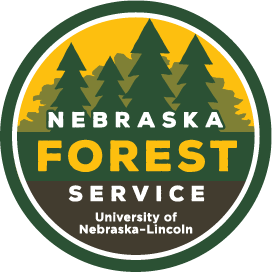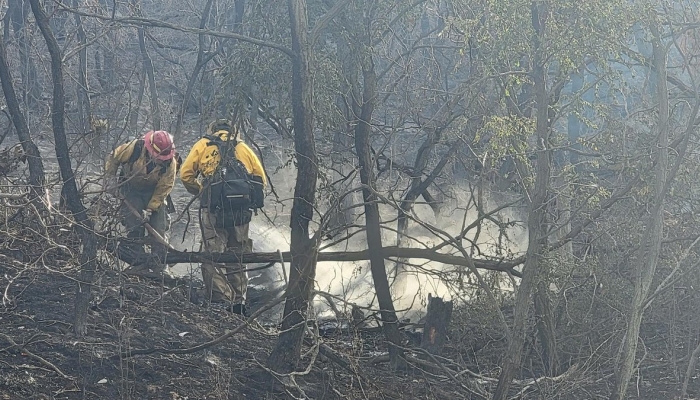Another Challenging Year for Trees on the Plains

Severe weather conditions are a way of life on the Great Plains, and Nebraskans are familiar with how such conditions impact our crops, livestock, and gardens. But what about trees? The extremes of our climate negatively impact tree health, although the symptoms are not always easy to recognize and sometimes take a while to appear.
Take drought, for example: 2022 turned out to be one of the driest on record for Nebraska. Obvious symptoms of drought include leaf scorch, leaf drop, and tree death, especially on young, recently planted trees, which have limited root systems. Long-term effects of drought are more subtle. Shorter twig growth and smaller leaves result in thinner canopies. More importantly, water stress lowers the resistance of trees to attacks by insect pests and
pathogens.
“Some drought-induced pests take months or even years to cause significant, noticeable damage to trees,” said Laurie Stepanek, Forest Health Specialist with the Nebraska Forest Service. “By that time, the drought may be over and forgotten.” Recognizing the important role drought plays and providing supplemental water during dry conditions is the best way to manage many of these pests.
Untimely freezes also impact trees. Extremely low temperatures in autumn can catch trees before they have hardened off for winter, directly damaging tree tissues. Early deep freezes also often trigger the development of cankers, which are diseases affecting the branches or trunks of trees.
A freeze-induced canker is thought to be the cause behind widespread dieback and mortality of young eastern red cedar windbreaks in recent years. Stepanek has examined many dying trees in windbreaks throughout eastern Nebraska.
“When I excavated the roots and cut into the bark, I found that the lower trunk and roots were healthy,” said Stepanek. “But just a few inches up the trunk, the bark was brown and dead, typical symptoms of a canker disease.” When she checked historical weather data, Stepanek found that in recent years, autumn temperatures had on some days dipped to the single digits -- extremely cold for so early in the season.
Late spring freezes, such as the one that affected much of western Nebraska in May 2022, are also damaging. Chrissy Land, Western Community Forester, noted that the freeze was preceded by several weeks of unusually warm weather, which pushed a lot of new growth on trees.
“This new growth is very susceptible to freeze,” said Land. “I noticed damage on a wide range of trees: oak, ginkgo, Kentucky coffeetree, honey locust, catalpa, redbud, and ash.”
With the growing frequency of extreme weather events, the challenge is finding ways to keep our tree and forest resources healthy. NFS staff continue to promote best management practices such as proper watering and protection of the root zone, which can help offset some of the effects of stressful weather. They also are working to identify and test under-utilized tree species and seed sources that may be better adapted to climate extremes. The goal is to ultimately improve the resiliency of Nebraska forests well into the future.

